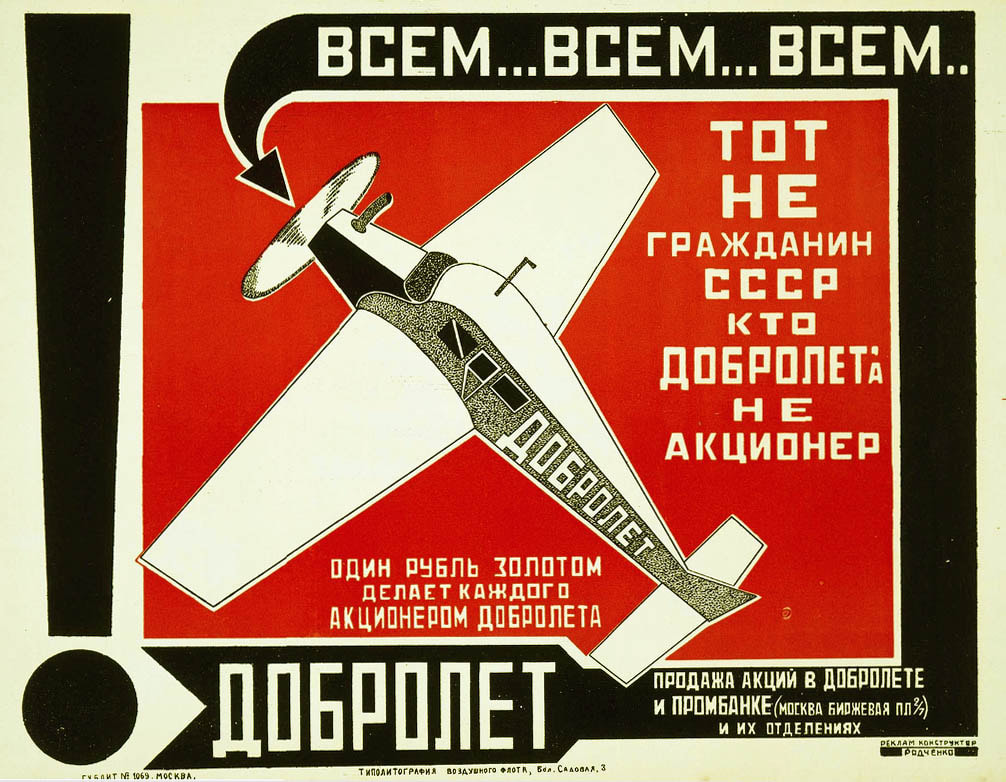|
Books (Please)! In All Branches of Knowledge, Alexander Rodchenko, 1924. Originating in Russia in 1915, led by artists such as Vladimir Tatlin and Alexander Rodchenko, The Constructivism movement was heavily made up of art pieces that were abstract and geometric in shape, and bold and limited in colour palettes, and was intended to reflect a modern industrial society, and were heavily used in communist propaganda posters at the time. Although the limited colour palettes, traditionally red, black and white may have been a stylised choice for Constructivism artists, it was too a practical choice, as many of these posters would have been massed produced and full colour prints were expensive. Added to this, many Constructivist pieces made the most of diagonal lines, creating dynamic pieces that only stood out further again the bold backgrounds and worked alongside the text. Alexander RodchenkoPoster for the Russian state airline Dobrolet, Alexander Rodchenko, 1923. Alexander Rodchenko, one of the leading artists in the Constructivism movement, was seen to have made numerous graphical pieces of artwork over the years, most of which were bold and geometrical in shapes and colours. Above are two of Rodechenko's earlier pieces of work a promotional posters urging people to buy shares of 'Dobrolyot', a Russian Airline. It is the simplicity of the pieces that make them effective, with bold backgrounds of black and red, associated with many of Rodcheko's pieces. Combining the bold background with the equally as bold white text, ensures that information is easily read, and is able to stand out alongside the images used, for example the aeroplane in the centre of the left poster. El LissitzkyRussian exhibition poster, El Lissitzky, 1929. Another example of a Constructivist poster by El Lissitzky is a different example as of how the movement was used to make propaganda. In this piece, it presents the ideals of the communist regime. This piece however brings more of a focus to the photography being the centre piece of the poster, but with that said, it still holds the abstract feel that Rodchenko's piece does, just in a different way, this time through the combination of the girl and the boy to share an 'eye', being the USSR and pointing to an equality between the sexes, as was part of the communist regime. Despite the clear differences between Rodchenko's work and El Lissizky's work, they both have similarities, from the limited colour palette and bold and dynamic composition, and they are both typical Constructivist posters that would have been massed produced in the Constructivist movement, from 1915 to the 1930s.
0 Comments
Leave a Reply. |
AuthorAmy Farrell. Archives
December 2020
Categories |
Site powered by Weebly. Managed by 34SP.com




 RSS Feed
RSS Feed